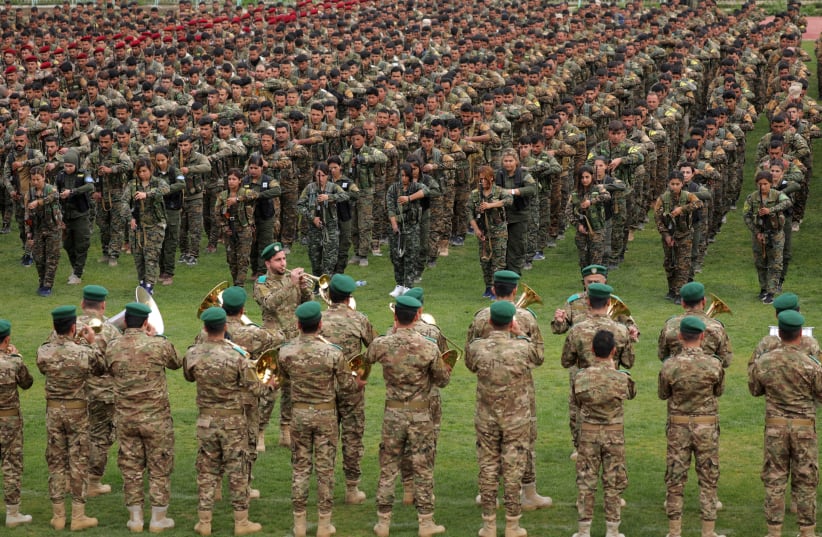The main line of critique of Obama’s Syria policy was that it represented a shift from opposing the Assad regime to fighting ISIS and that the shift was due to the Iran deal. In this narrative Obama abandoned Syrian civilians who were victims of Assad because the US wanted an Iran Deal. Iran is a key supporter of the Syrian regime, so to get the deal the US had to go soft on Assad. Therefore Obama walked away from a “red line” when Assad was accused of using chemical weapons in 2013.
The origins of the current US role in eastern Syria are in 2014 when the US began bombing ISIS in eastern Syria. It also began working with the People’s Protection Units (YPG), and eventually formed the YPG into the Syrian Democratic Forces (SDF). For critics this was merely rebranding the Kurdistan Workers Party (PKK) into a more palatable force. The issue here was that Turkey and the US view the PKK as terrorists so the US couldn’t work with terrorists, it needed a new organization.
The critics of Obama’s policy argue that the US partnered with the SDF precisely because it was not anti-Iran, therefore the Iran deal operators, such as Secretary of State John Kerry, could support both working with the SDF and the deal. The problem with that argument is that Kerry and the State Department never cared about the SDF and tended to oppose it in favor of Turkey. It was largely the Pentagon that helped iron out work with the SDF on the ground against ISIS and the Pentagon played little to no role in the Iran deal.
Nevertheless the argument is that Trump, when he finally decided to withdraw from Syria, was ending an Obama policy that was a product of the Iran Deal. In that argument the voices who condemned Trump are seen as Obama supporters who are anti-Trump. There is some truth to this. Among the most strident critics of Trump’s Syria policy are former Obama administration officials, such as former National Security Advisor Susan Rice or CIA Director John Brennan. The question is whether their criticism of Trump is motivated solely by anti-Trump views or whether they genuinely care about the Kurdish civilians and fighters abandoned by the US after October 6.
While one argument involves whether the US should have partnered with the YPG in the first place, and posits that the US should be more closely allied with Turkey, a second line of argument tends to support Trump’s decision to end “endless wars.” This tends to argue that Syria was an open-ended war and that the US troops there were “human shields” or a “trip wire” and that the US was no accomplishing anything in Syria. It was a waste of time and resources and should be handed over to Turkey and Russia.
There are also those who oppose US “regime change” wars and saw eastern Syria as essentially an anti-Assad effort whereby the US was occupying eastern Syria without a mandate to do so. In this logic the US was taking land from the legitimate government of Syria and using it as leverage against Russia or Iran. By withdrawing the Syrian regime could get back its land.
A discussion rooted in the Obama era tends to look at the US role in Syria not on its current merits but on whether or not others agreed with it or not. That discussion never allows the SDF to be anything but a product of the PKK without analyzing if it had changed over the years under US support. There is ample evidence that the SDF was a very different organization than the YPG in 2014. Part of that evidence is that it carried out no attacks on Turkey and that it changed its fighting strategy to defeat ISIS. Regardless, the US never sought to capitalize on gains in eastern Syria or to leverage them to transform the area. It was treated as an orphan of policy, given to the Pentagon to fight ISIS without a larger goal. That made it easier for the US to walk away from. Neither the Obama or Trump administrations ever had any real interest in the average people of eastern Syria or listening to their expectations from the US.
